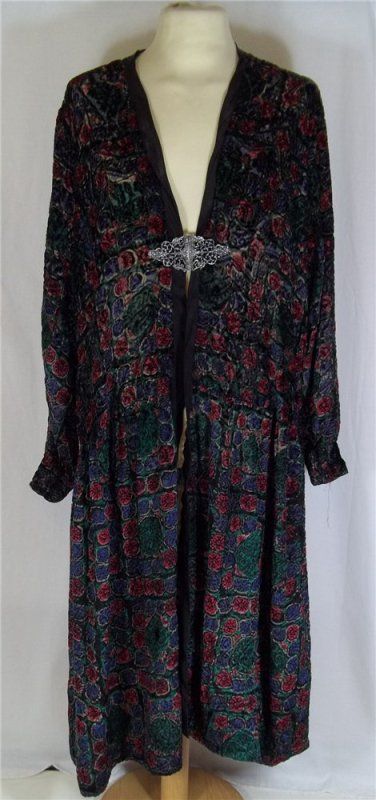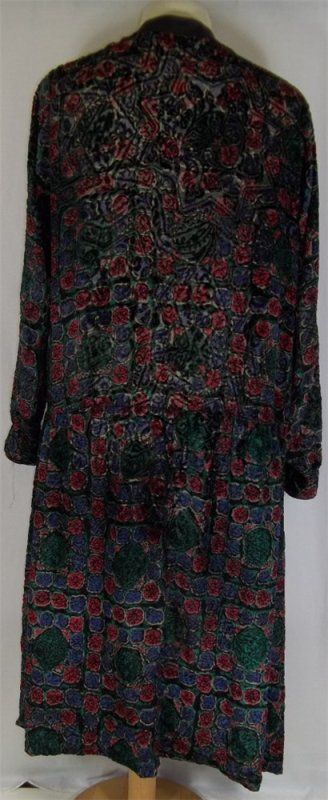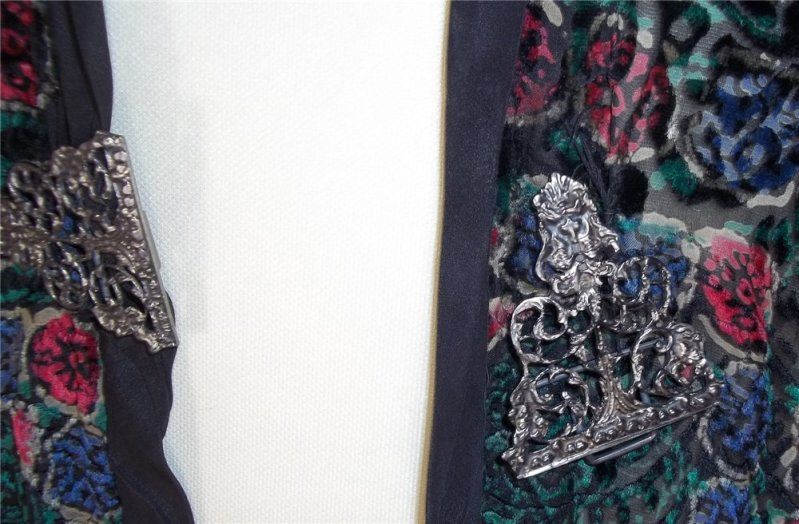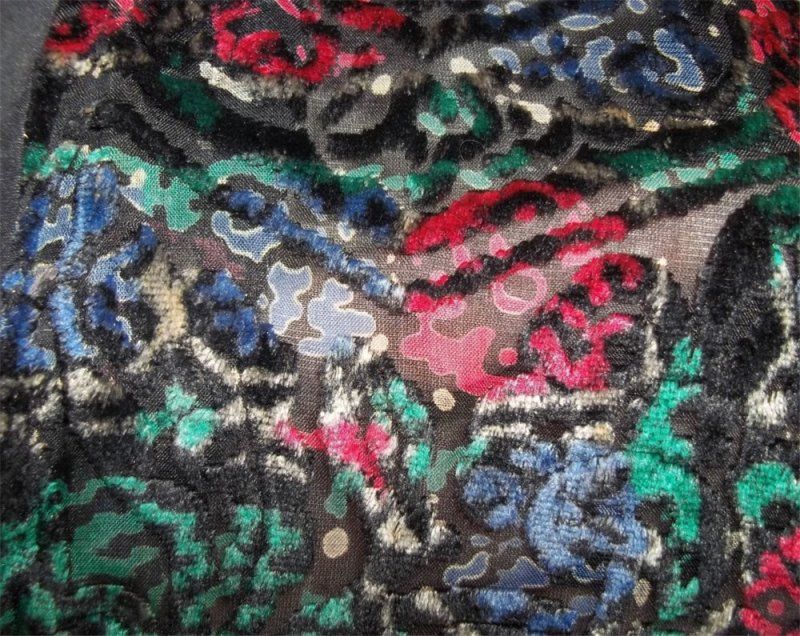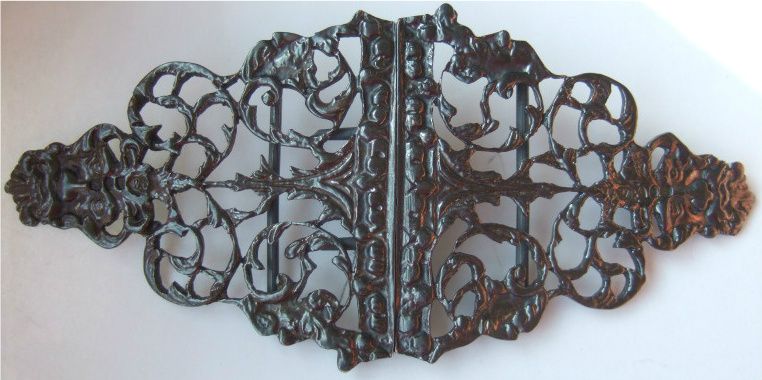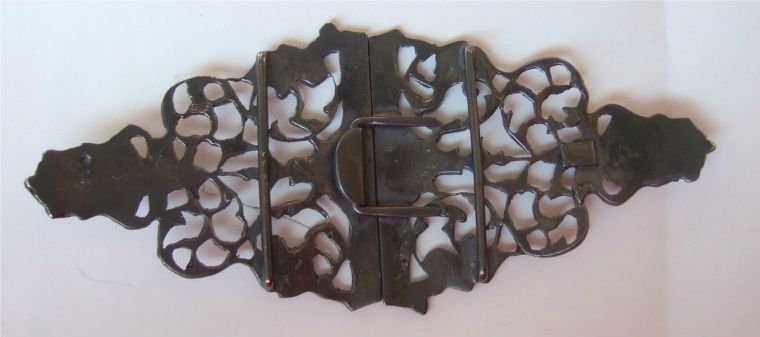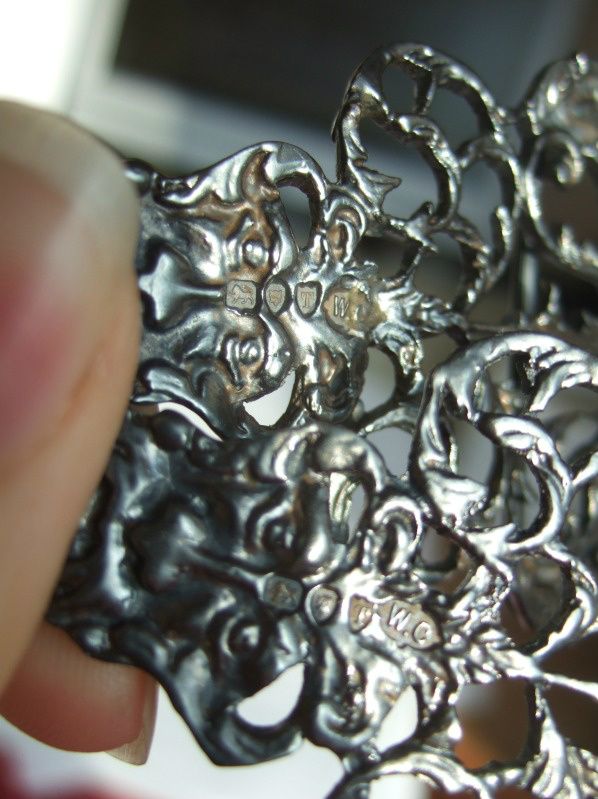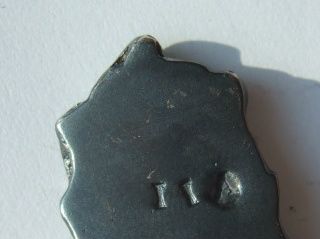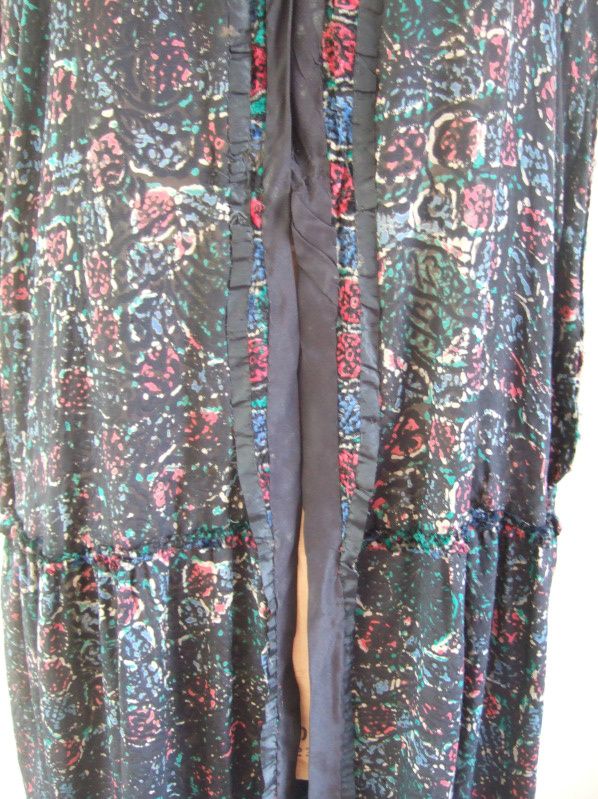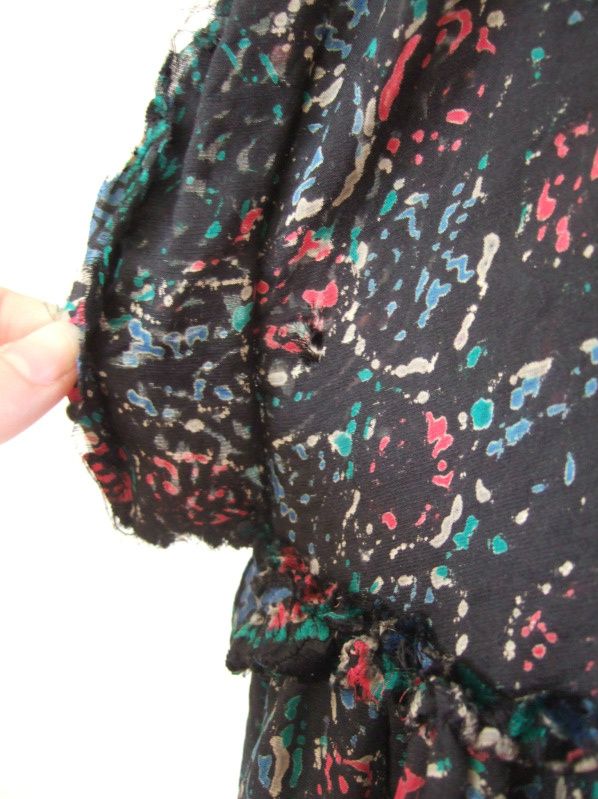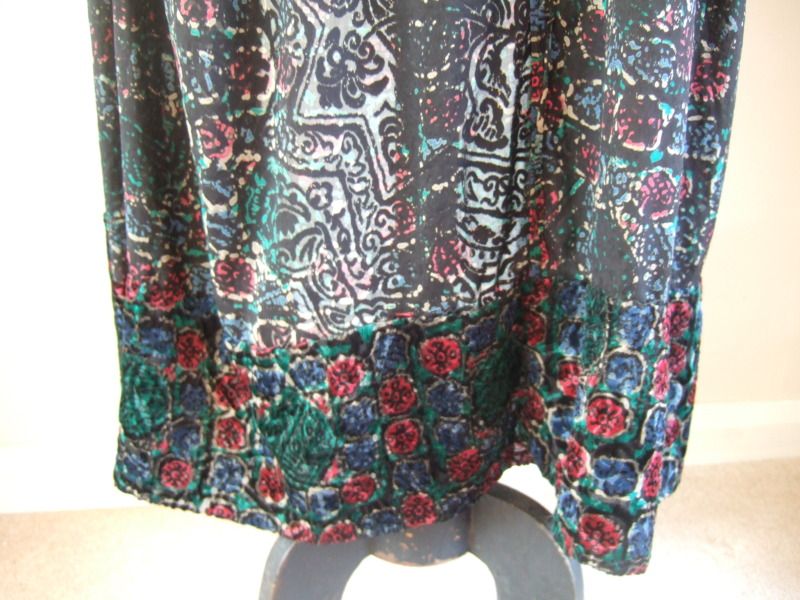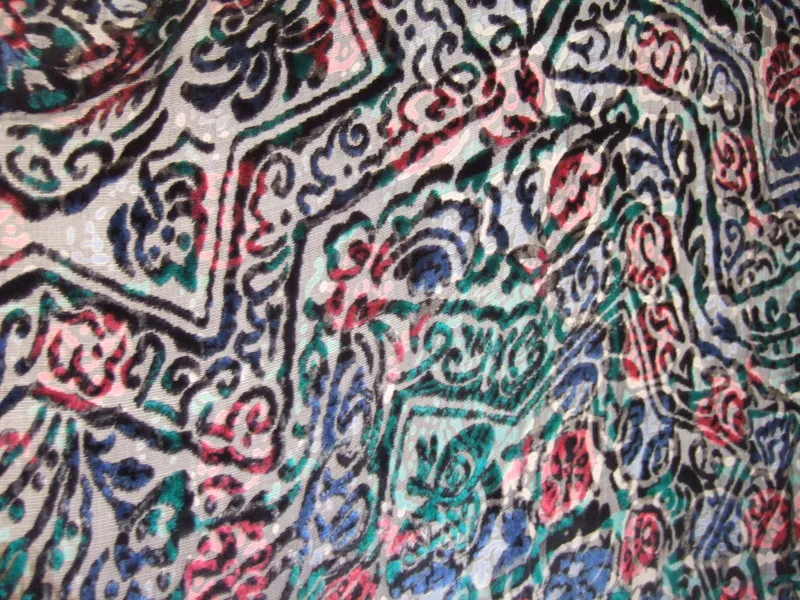Pinkcoke
Alumni
This has some holes but not too many and for the most part they are lost in the pattern so I think this one may be salvageable. If anyone has repaired a fabric like this before I would appreciate hearing how it was done. It's wonderfully light, only weighs 250g which makes me wonder why they put such a heavy metal buckle on it? I have to attach that better. I was hoping somebody could date this better for me, also how do you determine size with a garment like this? is it just meant to be free size / loose on whoever wears it? Though I'm not sure it should be worn, perhaps just for display.
